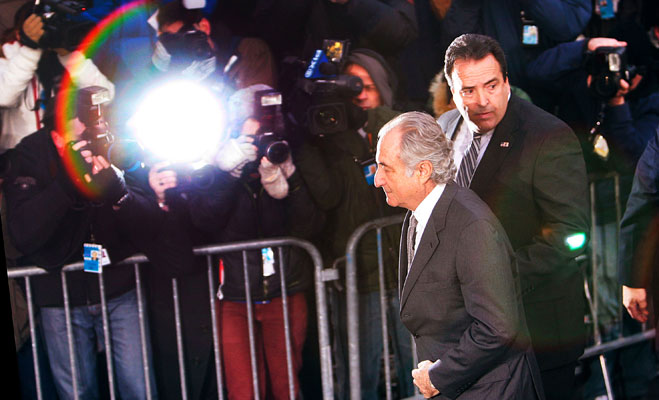The Ponzi palaver: the top 5 schemes
Being charmed by financial service representatives is not a new phenomenon. But when they’re overselling the shop, there can be many losers

Bernie Madoff
Madoff hit the headlines in 2008 when it was revealed that his massive international empire was built on fraud. Madoff has since been sent to prison because of his long running Ponzi in which he managed to amass over $65bn. Charities, Hollywood celebrities, and US football teams have all suffered as a result of believing that their investments in Madoff’s company were sound, whereas his back office trading accounts were pure fiction and each successive group of investors was funding another group therefore, no actual share trades and returns were involved.
Kautilya Nandan Pruthi
Recently, UK based criminal, Kautilya Nandan Pruthi was sent to prison for defrauding his victims of over £115m. While investors thought they were investing in a scheme that purported to give high yields, they were in fact only receiving their initial profits from other members of the scheme. Few of the funds taken by Pruthi have been recovered, he is reputed to have personally made £38m and maintained a very luxurious lifestyle. Approximately 800 people invested in the scheme – including cricket star Darren Gough – which ran for many years.
Michael Eugene Kelly
Kelly used the ‘timeshare’ model to deceive his investors and managed to defraud them of $428m in 2006. Kelly targeted his operation at pensioners who wished to invest their savings in timeshare hotels in Cancun that would give them the opportunity to earn some extra money through leasing contracts. The whole scheme was a hoax and many pensioners lost their entire savings when the scheme collapsed and US fraud investigators revealed the Ponzi.
Reed Slatkin
US citizen, Reed Slatkin set up a Ponzi, whereby managing to con around 800 Hollywood celebrities and other famous people out of $593m. Slatkin used his garage as a base for his operations while posing as an experienced investment broker and analyst. He created false trading accounts and fictitious brokerage firms whereas in reality he used his Ponzi in order to fund the Church of Scientology, where he was a minister. The original investors were paid out of funds secured by a later tier of investors and the scheme only became known following an investigation by the SEC.
The Albanian government Ponzi
In 1997, just after the collapse of the state of Albania and during the rule of its first freely elected government, the country’s citizens were persuaded to invest in a variety of Ponzi schemes run by the government. The population had no way of knowing that these schemes were based on the pyramid or Ponzi model. Investments rose to around $1.2bn, but when the citizens failed to receive any return on their investment, riots broke out.













